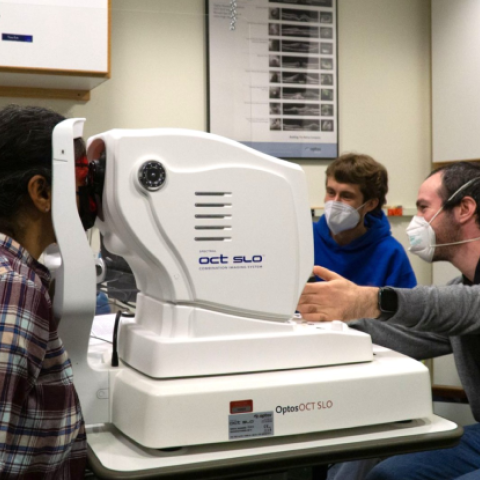
- Principal Investigator:
- Lora Likova
This project focuses on the emerging area of the neuroscience of art learning. It addresses the important issue of how the brain learns complex skills, specifically the process of drawing, through two different sensory modalities. Visual art, and drawing in particular, engages an orchestrated system of cognitive elements extending beyond mere visual perception. This brain system involves an array of cross-cognitive interactions for advanced learning in diverse sensory environments. However, there is a lack of systematic studies of the neural mechanisms of learning in visual art, or of the cross-cognitive transfer of such learning, and thus its neural substrate remains unknown. This exploratory neuroscience project will focus on understanding the fundamental dynamics of learning-based brain plasticity and the transfer of training effects between sensory modalities and drawing genres. By using high-resolution functional Magnetic Resonance Imaging (fMRI), we will be able to systematically explore a rich set of interrelated questions about how learning takes place in the brains of both the sighted and of the blind as they are being trained to draw. This project will promote advanced knowledge in this new domain of research through its novel paradigm, through the state-of-the-art fMRI-compatible drawing system able to both capture the drawing motion in the scanner and provide quantitative on-line feedback, and through the innovative methods for non-invasive analysis of the neural dynamics in the human brain.
The proposed studies will provide transformative insights into the general principles of learning in both the blind and the sighted, and into the commonalities and specificities of the neural process of learning through the visual or tactile modalities. The results will significantly enhance the understanding of the neural mechanisms of spatial cognition in blindness, specifically the mechanisms of brain plasticity that are of major importance for the future of both educational strategies and visual prostheses. The knowledge gained from this project can radically influence the development of new school and museum programs, as well as that of cognitive modeling and computational studies on spatial learning.

